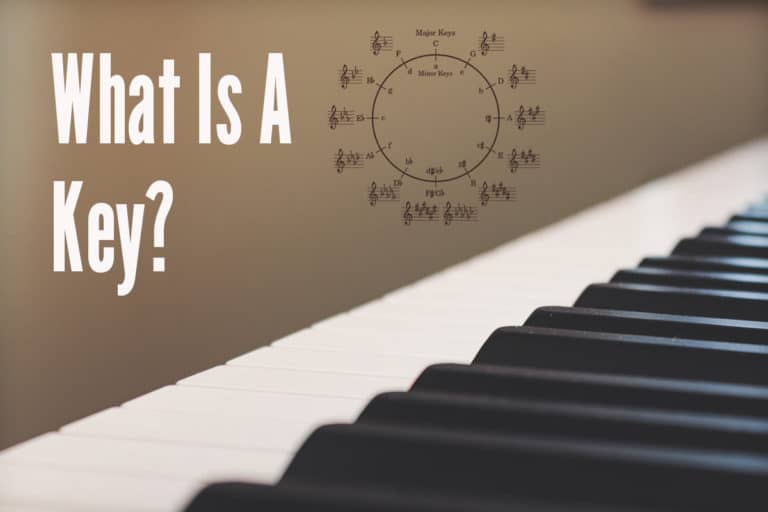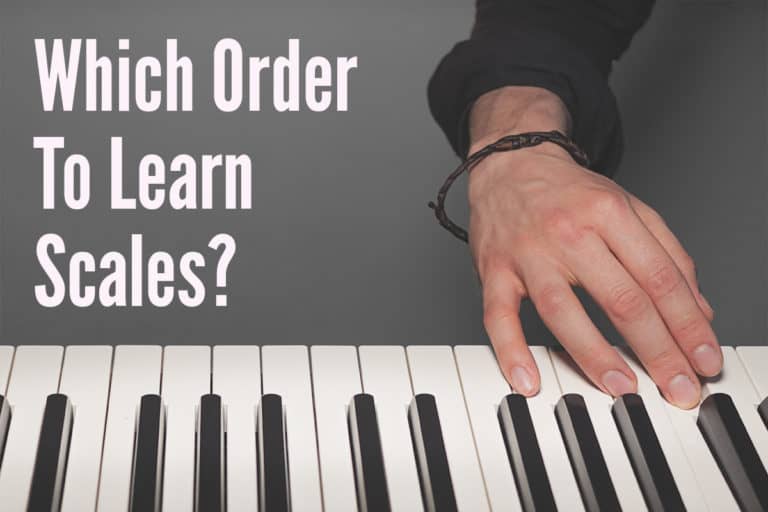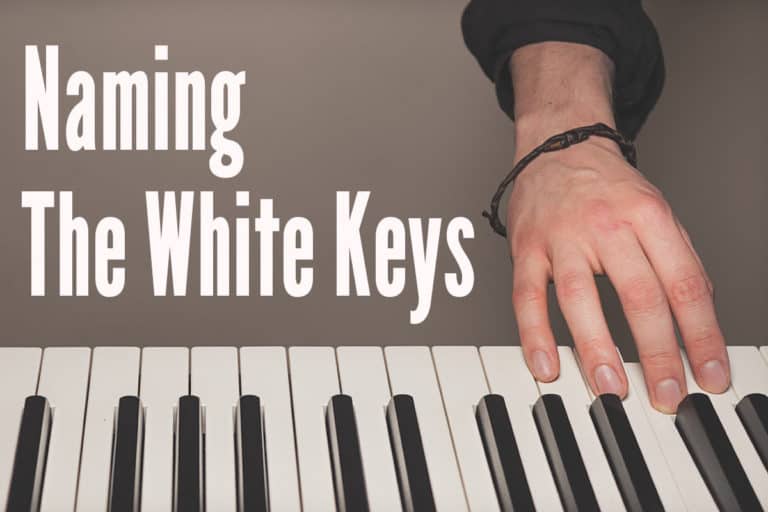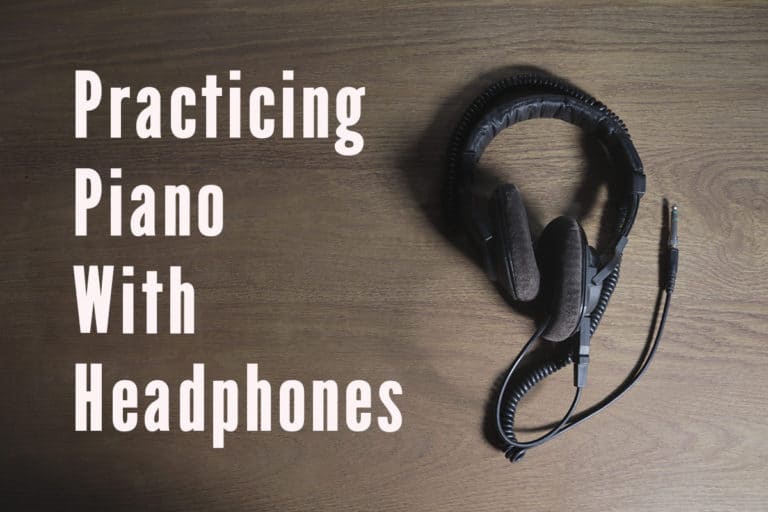Why Is C Major So Popular?
This post contains affiliate links.
C major is a very popular key to learn things in on piano. Many pianists on the beginner end of the spectrum learn songs and pieces in C, chords and exercises too and of course the C major scale.
So why is C major so popular? C major is a popular key for beginners because the scale only uses white keys, it has no sharps or flats. This makes many facets of learning easier including memorizing notes, reading, learning chords and inversions, improvisation plus understanding theory, intervals, harmony and chord progressions.
Having to think less about the notes you’re using in the beginning stages allows you to focus on other aspects of learning, like technique, but there’s a bit more to it than that. With a bit more insight into the learning process and effective methods, you can make more progress. Let’s dive into exactly how starting with C can often help you develop.
Finding The Note C First
Most piano teachers, myself included, will start complete beginners off on their journey by finding middle C and learning the rest of the note names from there. There’s a good chance though that you may have thought it might make more sense to start with A.
So why does piano start with C and not A? The note C is visually clearer than an A to find on the keyboard first and middle C is an important marker you need to tell which octave to play in. The C major scale is the most useful scale to learn first on piano as being only white notes makes it easier to learn, play or read in that key.
When learning piano, we’re aiming to eventually have much of what we learn internalized to the point where we don’t have to think too hard about it, almost like becoming fluent in a new language. Being able to recognize the notes effortlessly is the start of this process as you will need to find notes quickly for everything else you do; playing songs, scales, chords, reading and so on.
A C being just to the left of every block of 2 black keys is much easier to spot by eye than an A which is buried amongst the block of 3 black keys.

To start with, just memorizing one note makes the learning process easier and then from that reference point we can use the alphabet to figure out the other notes. In my post on naming the white notes I have a detailed practice method and tips on how you can become fluent at this. You can CLICK HERE to read that.
You can, however, use F for example as a secondary marker if you find that helpful. From F, it’s quicker to find to a G than climbing all the way up from C as it’s right next door on the keyboard.
It’s not essential to learn C first and the A natural minor scale even uses the same notes. All factors considered though, C just makes the most sense.
Why Is Middle C So Important?
Learning the note C first also means that right from the get go, we are used finding middle C on the piano
But why is middle C so important? Middle C is important because it’s a marker used by musicians to tell which octave they are in. There are different versions of each note in different ranges so this reference point helps you know exactly where you are on your instrument straight away and how high or low to play.
Middle C is the C that is closest to the middle of your piano or keyboard.

If you forget to use middle C as a reference point (and if you forget to use your ears!) it’s very easy to accidentally play a note or even an entire piece of music higher or lower than it was meant. This is because all the shapes on the piano would still look the same in each octave so you just have to learn which range is which by going outwards from the centre. You need to know this whether playing from memory, playing by ear or reading from sheet music.
Middle C is also known as C4. It is the 4th C up from the lowest C (C1) on a full size piano.
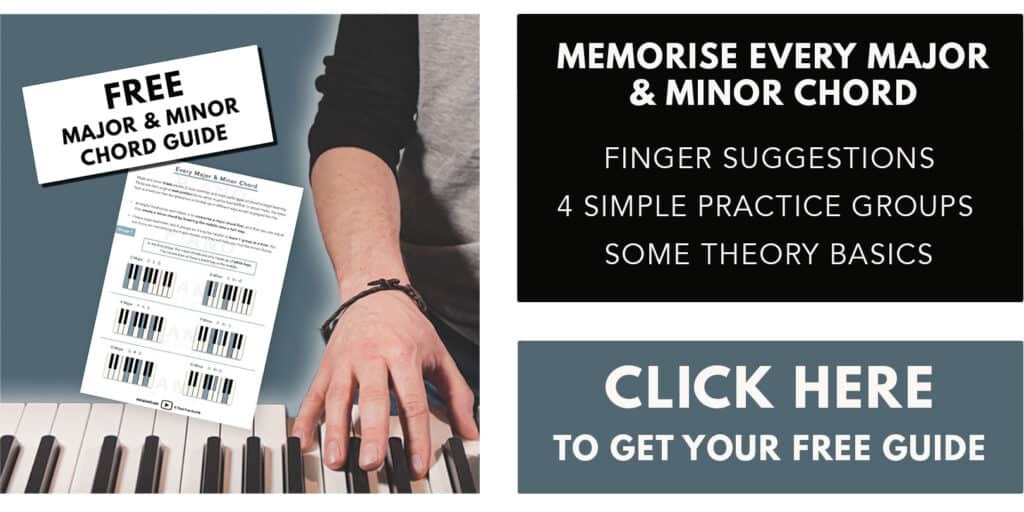
Learning The C Major Scale First Is Important
Why is the C major scale important? Major scales are the most common scales used in music and C major is the only one without any flats or sharps (black keys). That makes it easiest, technically and visually for a beginner to learn this scale first, play music in the key of C or learn to read sheet music. Like any scale, the major scale can be played in all 12 keys, meaning the major scale pattern can be started from each of the 12 different notes.
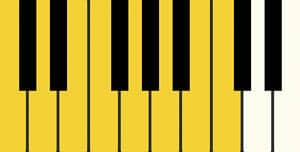
When you know why we learn scales this all makes much more sense. Most importantly, they tell us where the notes are that we’re going to use so we’re comfortable moving around them to play music. It’s easy to get visually lost with the keyboard layout when we’re using a mixture of black and white keys.
Learning C first and starting with music written in C allows us to focus more on some of the core skills we’re developing like holding up wrists correctly, getting familiar controlling our fingers and performing thumb tucks. We’re likely to play the wrong notes and mess up too. It’s quite easy, for example, to accidentally play an F in the key of G major when it should be an F#. With scales that form a more wavy shape on the keyboard, we really have to be thinking ahead in order to position our hand correctly to reach the black keys.
Naming the black keys either way as sharps or flats involves knowing the white keys first so it’s much clearer to start simply. Stumbling and pausing over which note to play next in a piece of music can really hold you back. It makes sense to begin by just using the white keys and then expand your vocabulary once you become more fluent.
Of course you can still learn the black keys sooner but mostly learning music in C at the very start is certainly beneficial. I have a playlist on my YouTube Channel dedicated to learning all your major scales. You can view that playlist and pick which scale you’re after here.
It’s Much Easier To Start Reading In C
This ties in to playing music generally in C but reading deserved a specific mention. Learning to read from sheet music is almost a whole separate skill in and of itself. For a beginner, instead of just finding the correct notes, you now have to figure out which notes it is you need to find. Keeping this simple in the beginning without worrying about the black keys is most beneficial for your progression.
There’s 2 ways a piece of sheet music can tell you you need to play one of the black keys. One way is to just use a flat symbol (b) or a sharp symbol (#) next to the note. For example, drawing a # next to the dot representing F means play F sharp. It’s just an extra bit of information to interpret that you don’t need when learning to recognize which notes to play and translate that immediately to the keyboard.
The other way involves using something called key signatures. These essentially tell you at the start of the music which flats or sharps to use in the music. They are the sharps and flats that would be in the scale you’re meant to use. So now, not only do you have find them on the keyboard, but you also have to remember which ones are in the scale you are using to avoid playing the natural (white note) by mistake.
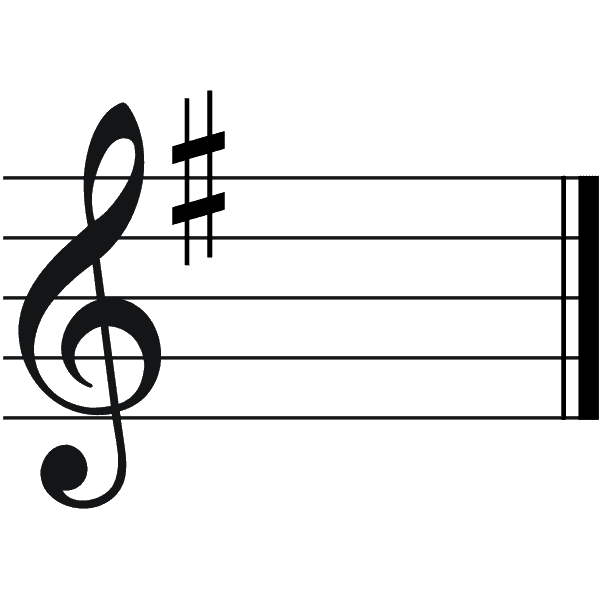
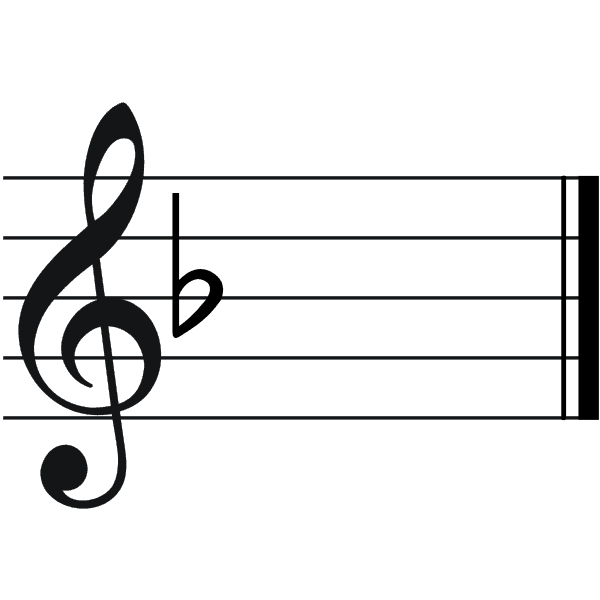
Again, it’s a far more productive learning experience and you’ll see better results much faster if you start with basics and then build up to more complicated things incrementally and slowly.
Memorizing Or Improvising Music In C
One of the challenges of learning music is getting familiar with keys that have a mixture of black and white notes, getting comfortable and familiar moving around them and learning where you can and can’t go.
It’s hard to play a piece with fluidity and a sense of musicality from memory until you really don’t have to think very hard about what notes are coming next so learning in C is one less barrier to get there.
Similarly, one of the challenges of improvisation before even deciding what to play, is knowing where your possible note options are. In C you don’t have to think so hard about where you can and can’t go on the keyboard which frees up your mind a bit more your mind, creatively.
Learning Chords And Inversions Is easier In C
Whether you’re interested in classical repertoire or more contemporary music, learning chords and inversions is a must. Before you even think about the technical side, learning to play them involves recognizing shapes on the keyboard. These help you chunk information together, get familiar with the keyboard and learn faster.
We first learn chords in root position which just means one of each note in order starting from the root note. Using only the chords in the C major scale (white note chords), this is a simple pattern to find being just every other white note until you have 3. The different basic white note triads will all have the same shape and feel under your fingers.
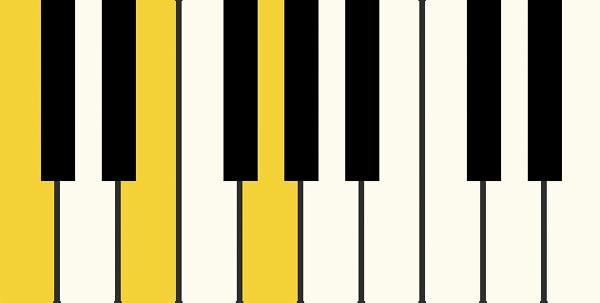
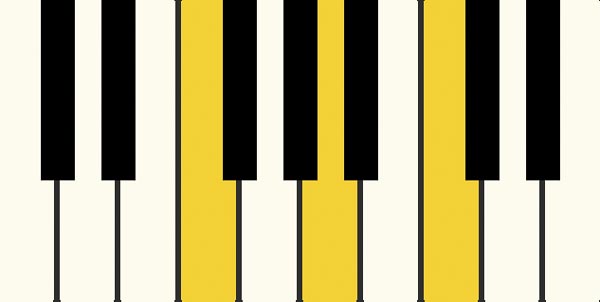
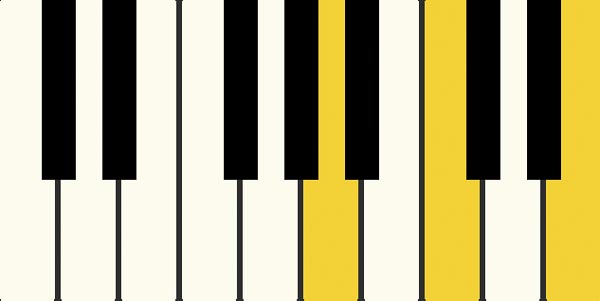
Then when you get to using chord inversions which are just those same notes rearranged into 2 other possible orders, again when you’re just dealing with the white keys of C major all the shapes will be the same. This allows you to get a better grasp on finding them and playing them in the beginner stages.
When using chords in other keys which include black notes, the shapes on the keyboard will keep morphing so it’s much clearer to get used to the key of C first and many find it easier to start here, technically, too.
Intervals And Theory Are Clearer To Understand In C
Learning chords isn’t just about the practical side. It’s also important to begin to understand how harmony works, how they’re built using intervals and also how chord progressions work. I have a YouTube playlist full of important beginner theory topics you can check out HERE
A solid grasp of basic theory and harmony will take you a long way. It will help you learn faster, read better, improvise and really just speak the language of music more fluently. This is all much easier and clearer to comprehend in C so I highly recommenced gaining that clarity by looking at things in this key.
Intervals
I don’t want to get too in depth into intervals in this article, but ostensibly, they are one of the fundamental building blocks of music. They are the names for the different sized gaps between notes and we can measure how far apart they are in half steps. We only need to worry about up to an octave apart to begin with really. The important thing is that each interval is a unique harmony and has a unique character to the sound.
I like to think of each one as an ingredient. As we use intervals to build chords and scales, we can then think of them like a list of ingredients. We then have to find those intervals on the piano.
Because of the layout of the piano, the same sized intervals will keep looking different depending on which note you start. For example, sometimes a major 3rd will be 2 white notes, but in other places it’s a mixture of black and white or possibly 2 black notes. For this reason, the shape of chords and scales on the keyboard are ever changing which becomes visually confusing very quickly.
| Root | b2 | M2 | b3 | M3 | P4 | #4/b5 | P5 | b6 | M6 | b7 | M7 | Octave |
| C | Db | D | Eb | E | F | F#/Gb | G | Ab | A | Bb | B | C |
The great thing about the key of C is that from the note C being our root, all the major and perfect intervals are white, and everything else is black. This makes it SO MUCH EASIER to see and comprehend elements of theory such as which intervals are used to build certain types of chords and scales and even how chord progressions work.
For a super clear and helpful explanation of intervals, you can check out this video below from my YouTube channel
Chord Progressions
In music we number the chords in a key. We commonly also use roman numerals too. A chord starting from the first note of the scale is chord 1 (I) , a chord starting from the 5th note of the scale is chord 5 (V) and so on.
This helps us understand how chord progressions work, really know what we’re playing and be able to transpose this into other keys too. In C, it’s much visually clearer to keep track of what’s happening at an earlier stage in your playing. It can take a lot more experience to be able to do this confidently in other keys like E for example that have a mixture of black and white keys.
I have a video diving into the idea of using C to make things clearer too you can watch below
But A Minor Is All The White Keys Too
Yes, A minor is also all the white keys, the A natural minor scale at least. It shares the same notes as C major, it just begins at a different point, A becomes the root. For this reason we call it the relative minor of C and they also use the same key signature, which is just blank because there’s no flats or sharps.
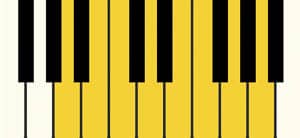
You could learn to physically play the A minor just the same as C (they use the same finger pattern) and read just as easily too from sheet music. The major scale itself is just the most foundational tool to learn first for understanding harmony and the most commonly used scale which means it seems the more helpful choice. There are also variations of minor scales too so in the interest of keeping the learning process organized and clear, saving that topic for further down the road is likely best. New musicians can find it strange to not use the first letter of the alphabet first as language has engrained this in us, but after a while of studying music, you soon get used to it.
Moving Beyond C
Once you’re starting to get comfortable in C, have some basic technique down and a few piano miles under your belt, it’s vital to push yourself and learn more scales, new music in other keys and read other key signatures if you’re a reader. Don’t spend too long a period just in C as most music will not be in that key! It’s vital that you push yourself and get familiar with other shapes and keys on the piano, theoretically, visually and technically.
You may find when you begin to learn more scales that wavier shapes can actually feel more comfortable for your hand to mould around and it’s easier to play smoother and faster. This is not uncommon and some people have said it would be technically easier to learn these first, particularly because the thumb tuck is probably more comfortable in keys such as E major. There is certainly an argument for this but as a piano teacher, I have found the other points in the case for C to take precedence.


